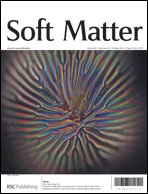The increase in wettability of a low surface energy solid surface has become an important task for different applications, and this can be improved by the help of surfactant solutions. On the other hand, reduction of surfactant consumption without compromising the wettability may be of great importance from an environmental and economic viewpoint. So in this work, we studied the effect of two different electrolytes as additives in the presence of cationic (cetyltrimethylammonium bromide, CTAB) and nonionic (Igepal CO-630) surfactant mixtures on the wetting of a low energy PTFE (polytetrafluoroethylene) surface. Different physicochemical properties such as critical micelle concentration (CMC), surface excess (Γmax), minimum area per molecule (Amin), and interaction parameters (β) have been estimated for the mixed surfactant and mixed surfactant with electrolyte solutions. The cationic–nonionic mixed surfactant system showed a synergetic behavior and a maximum synergism was observed for the mixed surfactant in the presence of electrolytes. The addition of electrolytes in the mixed surfactant solution increases the wettability by achieving minimum contact angle (74.6°) at the PTFE–water interface and reduces the consumption of surfactants up to 85% compared to the pure CTAB.

You have access to this article
 Please wait while we load your content...
Something went wrong. Try again?
Please wait while we load your content...
Something went wrong. Try again?


 Please wait while we load your content...
Please wait while we load your content...